Propofol

Propofol structure
|
Common Name | Propofol | ||
|---|---|---|---|---|
| CAS Number | 2078-54-8 | Molecular Weight | 178.271 | |
| Density | 0.9±0.1 g/cm3 | Boiling Point | 256.0±0.0 °C at 760 mmHg | |
| Molecular Formula | C12H18O | Melting Point | 18 °C(lit.) | |
| MSDS | Chinese USA | Flash Point | 107.5±7.2 °C | |
| Symbol |

GHS07 |
Signal Word | Warning | |
Use of PropofolPropofol potently and directly activates GABAA receptor and inhibits glutamate receptor mediated excitatory synaptic transmission. Propofol has antinociceptive properties and is used for sedation and hypnotic[1]. |
| Name | propofol |
|---|---|
| Synonym | More Synonyms |
| Description | Propofol potently and directly activates GABAA receptor and inhibits glutamate receptor mediated excitatory synaptic transmission. Propofol has antinociceptive properties and is used for sedation and hypnotic[1]. |
|---|---|
| Related Catalog | |
| Target |
GABAA[1] |
| In Vivo | Propofol (i.p.; 40 mg/kg) causes full recovery from sedation occurred 36.3 mins. There is residual antinociception when assessed by ECT but not when assessed by noxious heat[1]. |
| References |
| Density | 0.9±0.1 g/cm3 |
|---|---|
| Boiling Point | 256.0±0.0 °C at 760 mmHg |
| Melting Point | 18 °C(lit.) |
| Molecular Formula | C12H18O |
| Molecular Weight | 178.271 |
| Flash Point | 107.5±7.2 °C |
| Exact Mass | 178.135757 |
| PSA | 20.23000 |
| LogP | 4.16 |
| Vapour Pressure | 0.0±0.5 mmHg at 25°C |
| Index of Refraction | 1.513 |
| InChIKey | OLBCVFGFOZPWHH-UHFFFAOYSA-N |
| SMILES | CC(C)c1cccc(C(C)C)c1O |
| Storage condition | 0-6°C |
CHEMICAL IDENTIFICATION
HEALTH HAZARD DATAACUTE TOXICITY DATA
|
| Symbol |

GHS07 |
|---|---|
| Signal Word | Warning |
| Hazard Statements | H302-H315-H319-H335 |
| Precautionary Statements | P301 + P312 + P330-P305 + P351 + P338 |
| Personal Protective Equipment | Eyeshields;Faceshields;full-face respirator (US);Gloves;multi-purpose combination respirator cartridge (US);type ABEK (EN14387) respirator filter |
| Hazard Codes | Xn:Harmful |
| Risk Phrases | R22;R36/37/38 |
| Safety Phrases | S26-S36/37/39-S37/39 |
| RIDADR | 2810 |
| WGK Germany | 3 |
| RTECS | SL0810000 |
| Packaging Group | III |
| Hazard Class | 6.1(b) |
| HS Code | 2907199090 |
| Precursor 8 | |
|---|---|
| DownStream 10 | |
| HS Code | 2907199090 |
|---|---|
| Summary | 2907199090 other monophenols VAT:17.0% Tax rebate rate:9.0% Supervision conditions:none MFN tariff:5.5% General tariff:30.0% |
|
Ca(2+) permeation and/or binding to CaV1.1 fine-tunes skeletal muscle Ca(2+) signaling to sustain muscle function.
Skelet. Muscle 5 , 4, (2015) Ca(2+) influx through CaV1.1 is not required for skeletal muscle excitation-contraction coupling, but whether Ca(2+) permeation through CaV1.1 during sustained muscle activity plays a functional role ... |
|
|
Propofol increases morbidity and mortality in a rat model of sepsis.
Crit. Care 19 , 45, (2015) Severe sepsis is associated with approximately 50% mortality and accounts for tremendous healthcare costs. Most patients require ventilatory support and propofol is commonly used to sedate mechanicall... |
|
|
Propofol ameliorates calpain-induced collapsin response mediator protein-2 proteolysis in traumatic brain injury in rats.
Chin. Med. J. 128(7) , 919-27, (2015) Collapsin response mediator protein-2 (CRMP2), a multifunctional cytosolic protein highly expressed in the brain, is degraded by calpain following traumatic brain injury (TBI), possibly inhibiting pos... |
| 2,6-Bis(1-methylethyl)phenol (2,6-Bis(isopropyl)phenol |
| 2,6-i-Pr2-C6H3-OH |
| Diisopropylphenol |
| 2,6-di-iso-Propylphenol |
| 2,6-di(propan-2-yl)phenol |
| Propofolum |
| Disoprofol |
| 2-hydroxy-1,3-diisopropylbenzene |
| Fresofol |
| Diprivan |
| EINECS 218-206-6 |
| Disoprivan |
| 2,6-Diisopropylphenol |
| 2,5-DIHYDRO-5-OXO-1-PHENYL-1H-1,2,4-TRIAZOLE-3-CARBOXYLIC ACID DIMETHYLAMIDE |
| MFCD00008885 |
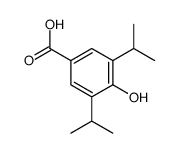 CAS#:13423-73-9
CAS#:13423-73-9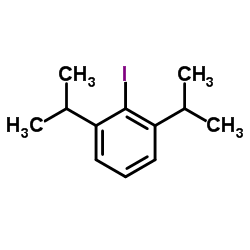 CAS#:163704-47-0
CAS#:163704-47-0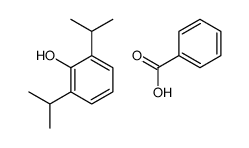 CAS#:2005-09-6
CAS#:2005-09-6 CAS#:34557-54-5
CAS#:34557-54-5 CAS#:7440-06-4
CAS#:7440-06-4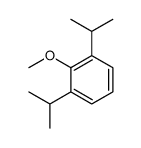 CAS#:2944-52-7
CAS#:2944-52-7 CAS#:187737-37-7
CAS#:187737-37-7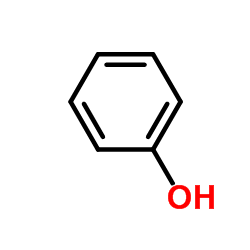 CAS#:108-95-2
CAS#:108-95-2![Phenol,4-[(dimethylamino)methyl]-2,6-bis(1-methylethyl)- structure](https://image.chemsrc.com/caspic/200/4918-95-0.png) CAS#:4918-95-0
CAS#:4918-95-0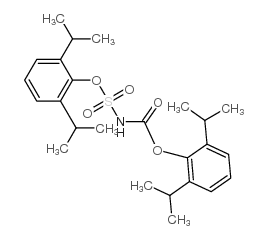 CAS#:142642-31-7
CAS#:142642-31-7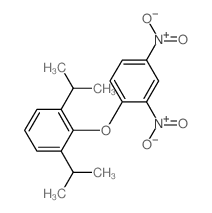 CAS#:20555-93-5
CAS#:20555-93-5 CAS#:738-15-8
CAS#:738-15-8 CAS#:1988-10-9
CAS#:1988-10-9![4-[2,6-di(propan-2-yl)phenoxy]-4-oxobutanoate structure](https://image.chemsrc.com/caspic/291/184869-48-5.png) CAS#:184869-48-5
CAS#:184869-48-5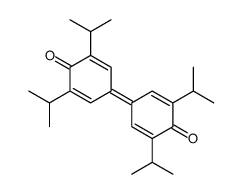 CAS#:2178-51-0
CAS#:2178-51-0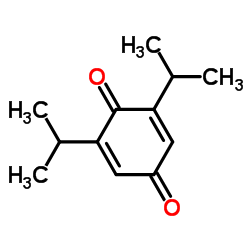 CAS#:1988-11-0
CAS#:1988-11-0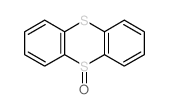 CAS#:2362-50-7
CAS#:2362-50-7
